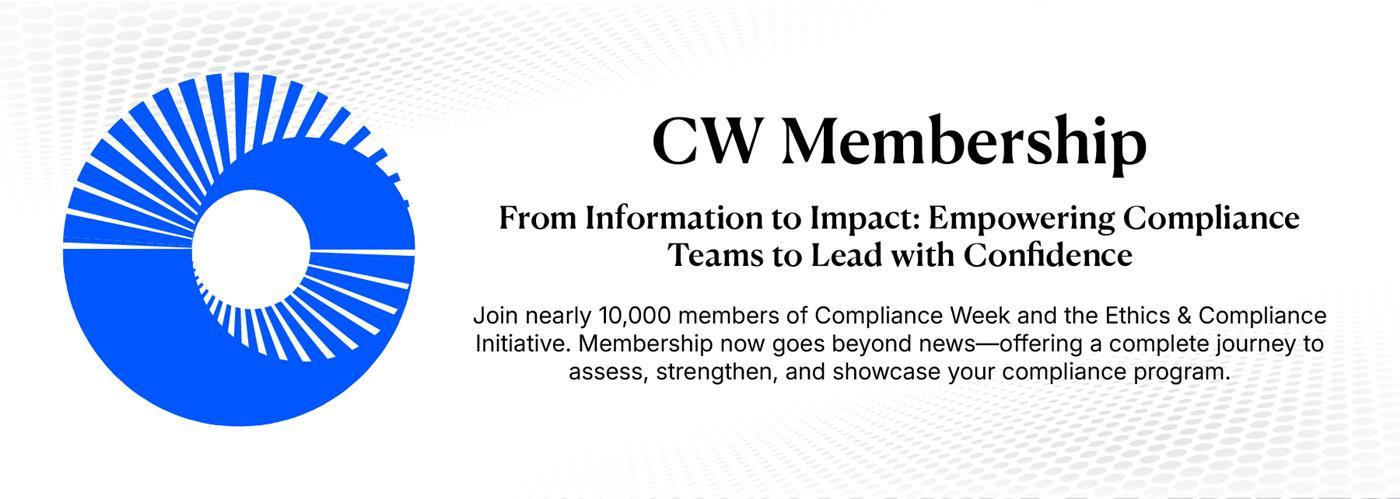- Home
-
News
- Back to parent navigation item
- News
- National Compliance Officer Day 2025
- Accounting & Auditing
- AI
- AML
- Anti-Bribery
- Best Practices
- Boards & Shareholders
- Cryptocurrency and Digital Assets
- Culture
- ESG/Social Responsibility
- Ethics & Culture
- Europe
- Financial Services
- Internal Controls
- Regulatory Enforcement
- Regulatory Policy
- Risk Management
- Sanctions
- Surveys & Benchmarking
- Supply Chain
- Third Party Risk
- Whistleblowers
- Opinion
- Benchmarking
- Certification
- Events
- Research
- Awards
-
CW Connect
- Back to parent navigation item
- CW Connect
- Sign In
- Apply
- Membership
TPRM due diligence best practices: No one-size-fits-all approach
By  Adrianne Appel2022-12-14T17:30:00
Adrianne Appel2022-12-14T17:30:00

Companies can’t do it all in terms of managing every risk from every possible third party, panelists discussed during a session on due diligence at Compliance Week’s virtual Third-Party Risk Management (TPRM) and Oversight Summit.
To begin, businesses must define their vision and strategy, said Samira Duijnmayer, compliance manager and regulatory and financial crimes officer at Booking.com.
“Decide what’s your north star and work toward it,” Duijnmayer said. For example, if you want to mitigate bad financial outcomes, make sure to do what’s needed in the risk process to achieve that goal, she said.
THIS IS MEMBERS-ONLY CONTENT
You are not logged in and do not have access to members-only content.
If you are already a registered user or a member, SIGN IN now.
Related articles
-
 Premium
PremiumSurvey: Cybersecurity, regulatory risks lead TPRM priorities in 2023
2023-02-10T14:00:00Z By Aaron Nicodemus
Respondents to a survey from Compliance Week and Dun & Bradstreet overwhelmingly indicated cybersecurity to be the most important compliance-related area affecting third-party risk management in the new year, though fraud and other risks should still be on their radar.
-
 Premium
PremiumTPRM panel: Underscoring need for first line of defense to own risk
2022-12-15T18:00:00Z By Kyle Brasseur
Panelists discussing risk ownership at CW’s virtual TPRM and Oversight Summit share their experiences educating first-line leaders on their roles and responsibilities in the TPRM process.
-
 Premium
PremiumTPRM Summit: How to successfully implement data analytics
2022-12-12T17:20:00Z By Aly McDevitt
A panel of experts at CW’s virtual TPRM and Oversight Summit offered a how-to primer on using data analytics to monitor third-party risk while also highlighting some caveats to implementation.
More from Risk Management
-
 Article
ArticleRapid regulatory change requires investment in compliance processes in financial services firms
2025-11-20T21:55:00Z By Ruth Prickett
Geopolitical instability and a general focus on increasing growth and productivity by governments worldwide are causing a slew of regulatory changes in the financial services sector. But most firms are failing to identify potential compliance changes early enough to make meaningful decisions.
-
 Article
ArticleCompliance should protect firms from AI-washing investigations and insurance claims
2025-11-05T20:28:00Z By Ruth Prickett
Insurance firms are warning that AI-washing could trigger a slew of cases against directors, and are adjusting their directors’ and officers’ liability premiums accordingly. With regulators cracking down on AI-washing, compliance could be a crucial line of defense and save companies on their insurance costs.
-
 News Brief
News BriefAI hallucinations in Deloitte Australia report highlight important role for compliance
2025-10-24T18:57:00Z By Ruth Prickett
“Hallucinatory” citations and errors in an AI-assisted report produced by Deloitte for the Australian government should be a wake-up call for compliance officers about the risks of placing too much trust in AI.
- Terms and Conditions
- Privacy Policy
- Do Not Sell My Info
- © 2025 Compliance Week
Site powered by Webvision Cloud






